By TRAVIS HIGH
On January 19, 2018, over 100 people attended the 4th Annual green finance event under the theme of clean energy project financing: where the rubber meets the road. This forum was timely, as the topic of clean energy has become more important than ever, stated Janine Finnell, Executive Director of Leaders in Energy.
With U.S. pulling out of the Paris Climate agreement, Finnell highlighted that there has been lot of concern about where clean energy and climate investing is headed. Despite this, a growing number of American companies are still planning to invest in renewable energy, according to surveys by GreenBiz and others. This news is encouraging, and there are also a lot of innovations in clean energy financing at the state and local level.
Potential Economy DC (PEDC) was an ideal partner for Leaders in Energy on this topic. PEDC is the only incubator in the DC area devoted to clean energy startups, according to Executive Director Dave McCarthy.
Finnell and McCarthy introduced a panel of five experts from different backgrounds: a green bank, finance, consulting, and local government. Yet their common goal is to create the conditions in which clean energy projects can be successfully launched and implemented, one of the most important of which is financing. That means finding ways to lower the risk for creditors and borrowers and making it easier for project developers to access financing.
Watch the entire event here, and download the presentation here. Here are some of the highlights from the discussion.
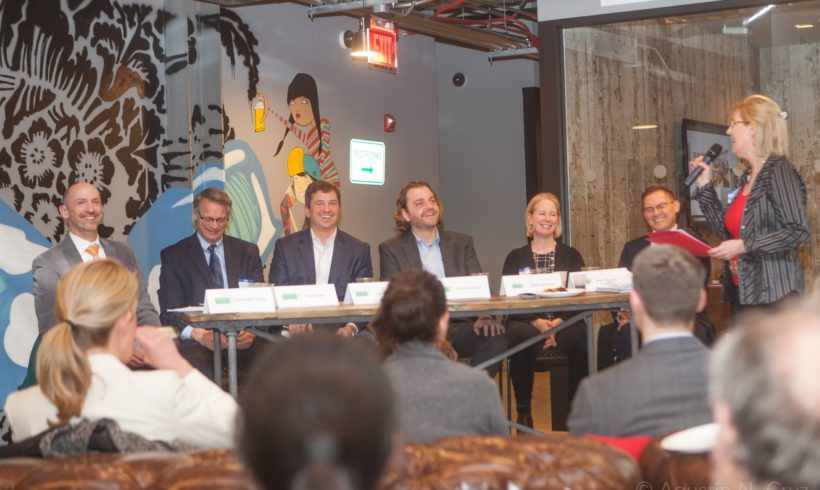
Montgomery County Green Bank
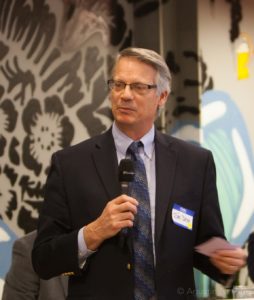 The Montgomery County Green Bank was created by Montgomery County resolution in 2016, endowed with $14 million in capital derived from the PEPCO/Exelon merger settlement. Using their capital as leverage, they partner with other lenders in order to create financing instruments that county homeowners and businesses can use for renewable energy. Chief Executive Officer Tom Deyo said that their goal is to create the conditions where investing in clean energy projects is seen as a safe investment.
The Montgomery County Green Bank was created by Montgomery County resolution in 2016, endowed with $14 million in capital derived from the PEPCO/Exelon merger settlement. Using their capital as leverage, they partner with other lenders in order to create financing instruments that county homeowners and businesses can use for renewable energy. Chief Executive Officer Tom Deyo said that their goal is to create the conditions where investing in clean energy projects is seen as a safe investment.
Once funding is targeted to those projects, then the bank can work to bring financing to others that are considered riskier. In their market analysis, they found that project loans in the $25 – 250k range were not being well financed, so they developed a product to fill that gap; in particular for energy efficiency, solar and energy storage. The bank underwrites the loans and stands behind the lender in case of defaults.
Another part of the bank’s mission is to promote an inclusive economy; in fact, it has a mandate to allocate 20% of its disbursements toward projects that promote inclusivity, such as affordable housing.
CleanCapital
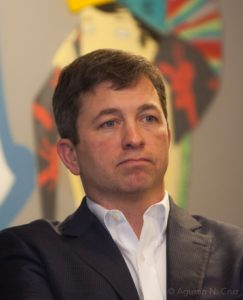 Now is a great time to be in the clean energy market, said Jon Powers, Co-Founder and President of CleanCapital. Powers has observed a lot of inefficiencies in the clean energy financing market. For instance, although solar panel and installation costs have come down significantly, 64% of the costs for a project now come from financing, grid integration and other “soft” costs. Despite the maturation of clean energy finance, spurred in part by tax incentives, still less than half a percent of institutional capital worldwide is invested in this area. There is a great opportunity for companies to work on reducing the cost of capital for investment in clean energy.
Now is a great time to be in the clean energy market, said Jon Powers, Co-Founder and President of CleanCapital. Powers has observed a lot of inefficiencies in the clean energy financing market. For instance, although solar panel and installation costs have come down significantly, 64% of the costs for a project now come from financing, grid integration and other “soft” costs. Despite the maturation of clean energy finance, spurred in part by tax incentives, still less than half a percent of institutional capital worldwide is invested in this area. There is a great opportunity for companies to work on reducing the cost of capital for investment in clean energy.
Kasunic Consulting
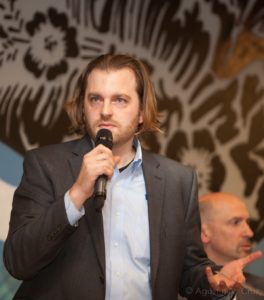 Cullen Kasunic, Principal with Kasunic Consulting, gave an overview of clean energy project finance, which he defined as raising money based on the pre-defined cash flow of an asset. In project finance, there are three parties; the investor, who puts up the capital; the developer, who comes up with the projects or technologies to be implemented; and the client, who is the beneficiary. This arrangement lowers business risk for the investor. The developer does not necessarily need to be credit-worthy in order to engage in projects. This opens up opportunities for those developers that find it challenging to access capital. Finally, since the projects are funded by the investor and paid by the cash flow from the client over the project life cycle, the $0 down payment is attractive to clients.
Cullen Kasunic, Principal with Kasunic Consulting, gave an overview of clean energy project finance, which he defined as raising money based on the pre-defined cash flow of an asset. In project finance, there are three parties; the investor, who puts up the capital; the developer, who comes up with the projects or technologies to be implemented; and the client, who is the beneficiary. This arrangement lowers business risk for the investor. The developer does not necessarily need to be credit-worthy in order to engage in projects. This opens up opportunities for those developers that find it challenging to access capital. Finally, since the projects are funded by the investor and paid by the cash flow from the client over the project life cycle, the $0 down payment is attractive to clients.
Abacus Property Solutions
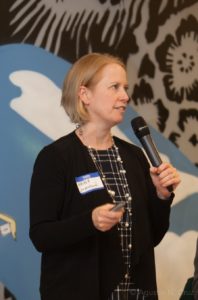 Abby Johnson, President of Abacus Property Solutions, comes from a project underwriting background, where projects in buildings would be undertaken without any consideration on overhauling the buildings’ energy systems. She started to wonder: Why can’t we underwrite projects that involve financing of energy efficiency upgrades?
Abby Johnson, President of Abacus Property Solutions, comes from a project underwriting background, where projects in buildings would be undertaken without any consideration on overhauling the buildings’ energy systems. She started to wonder: Why can’t we underwrite projects that involve financing of energy efficiency upgrades?
Abacus works with Property Assessed Clean Energy (PACE) programs. The Commercial PACE segment (C-PACE) represents over $500 million in financing and about 8,000 jobs created. To finance a project under this arrangement, the property owner receives a loan from a PACE lender, which is facilitated by the taxing authority. The authority reviews whether or not the project meets the program criteria. Then the property owner pays the lender either directly or indirectly through the program.
PACE-funded projects could allow for an investment for as little as $25 – 50k, but more likely between $150 – 200k. At the high end, projects can be as large as $40 million.
Arlington County
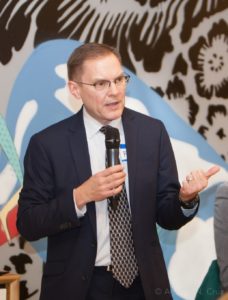 Rich Dooley is the Community Energy Coordinator on the Arlington Initiative to Rethink Energy team in Arlington County’s Office of Sustainability and Environmental Management. Dooley announced that the county just launched its C-PACE program two days prior to the event (read more). It is the first such program in the state of Virginia. The Arlington County Board adopted its C-PACE ordinance in November 2017, following a two-year journey after Virginia passed legislation enabling the program.
Rich Dooley is the Community Energy Coordinator on the Arlington Initiative to Rethink Energy team in Arlington County’s Office of Sustainability and Environmental Management. Dooley announced that the county just launched its C-PACE program two days prior to the event (read more). It is the first such program in the state of Virginia. The Arlington County Board adopted its C-PACE ordinance in November 2017, following a two-year journey after Virginia passed legislation enabling the program.
Over 70% of energy usage in Arlington is in its buildings, so Dooley argued for the importance of funding energy efficiency projects in reaching the county’s Big Hairy Audacious Goals for sustainability. The county provides third party program administration services at no cost to the county. There is a one-time fee projects pay to the Program Administrator to cover program design and implementation costs. Unlike in other jurisdictions, the funding and repayment are exchanged directly between the property owner and the lender.
Many thanks to WeWork for providing the event venue and to WethePizza for supplying the refreshments. Photos courtesy of Agustín Cruz, ArlingtonGreen, augie.cruz@gmail.com.
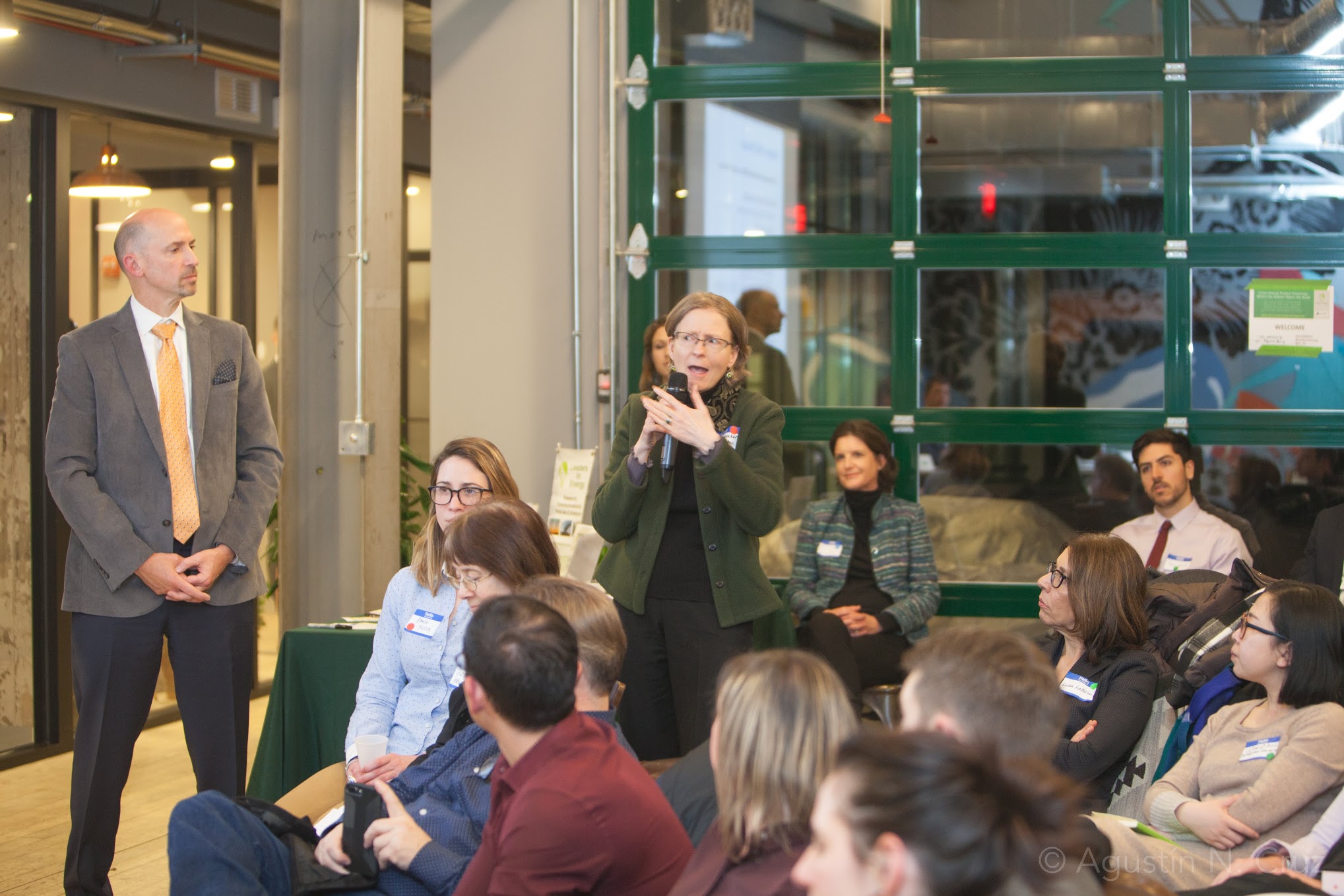
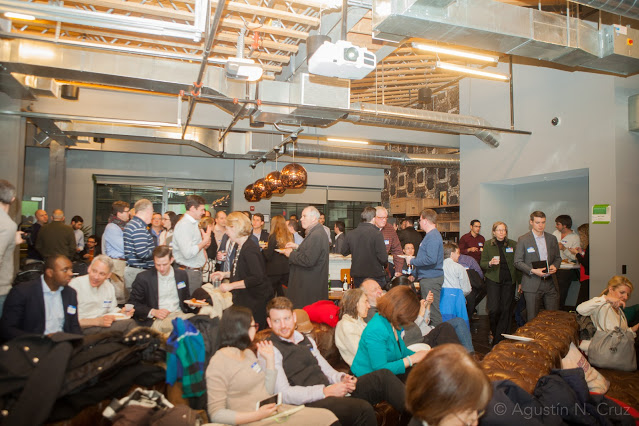
Leaders in Energy is building a community of engaged leaders to create a sustainable energy system, economy, and world. The three main areas of action are the green economy, sustainable communities, and multigenerational leadership. With operations in Metro Washington DC, we’ve built a base that spans most major metropolitan areas and over 100 countries. More information is available at https://www.leadersinenergy.org and in the Leaders in Energy Research, Communication, Policies & Analysis (LERCPA) LinkedIn group.


Leave a Reply